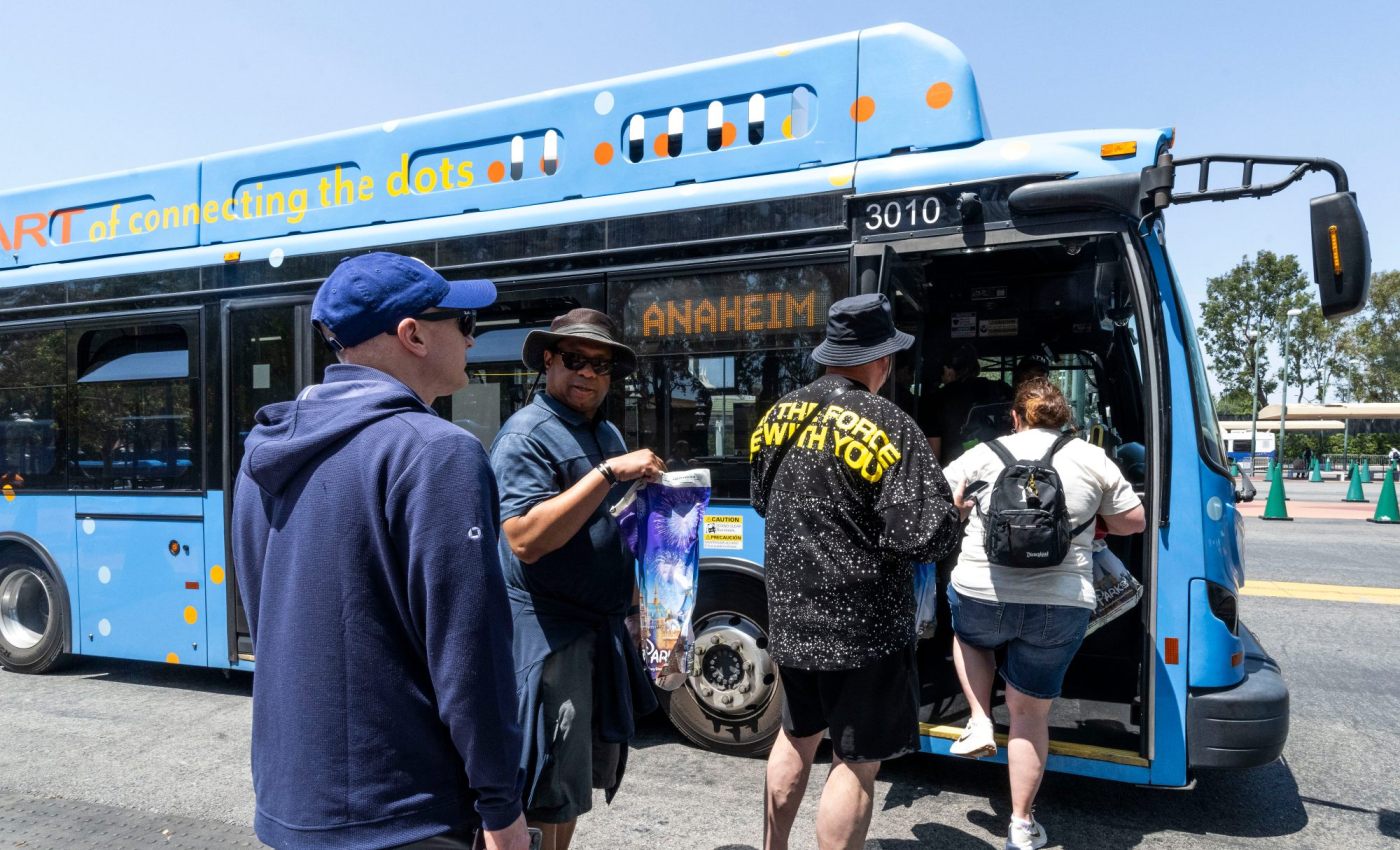The Anaheim Transportation Network, a critical service for millions of travelers and resort workers, is facing several years of budget deficits it will need to navigate, but help from new funding sources and possibly even a takeover by the city might be how it stays on the road.
The deficits, ATN CEO Diana Kotler discussed at a public budget workshop this week, are driven by sharply rising labor rates, she said. ATN moves more than 8 million riders a year, mostly through its ART bus system that serves the resort area.
Since 2020, ATN’s labor costs have gone up more than 60% and revenue increases have far from kept up, constrained by other factors, Kotler said. The transit provider will look to avoid making drastic cuts to services in its next budget, but already it projects revenues to fall short of expenses by $1.1 million.
ATN intends to lean on $1.7 million in funding that has yet to be allocated from the Anaheim Tourism Improvement District’s Transportation Committee to lower its budget deficit. Without that money, the projected deficit would be $2.8 million.
“There is no transit agency in the world that operates at a breakeven,” Kotler said. “The fact that we have been operating at a breakeven for 20 years, that is an accomplishment in itself.”
ATN projects its deficits to fluctuate in size over the next few years. Labor costs will grow, but money from a state transit assistance fund — originally expected this upcoming fiscal year — is now expected in 2027. ATN is also planning to provide services for OCVibe and the 2028 Olympic Games.
Long term, ATN’s board signed a letter of understanding this spring with the city of Anaheim to explore the feasibility of the city taking some amount of control over the transit provider. A consultant was hired to explore options for the city to consider.
“We’ve got to find a way that ATN can support itself,” said District 4 Councilmember Norma Campos Kurtz. “I’m hoping that the study being conducted will help us find that way.”
Kurtz, who represents the resort area, said in an interview that her hope is for ATN to find a way to sustain itself and not have to rely on using Anaheim Tourism Improvement District funds yearly.
The service, she said, is critical not only for tourists but workers traveling to the resort area.
“It takes traffic off of our streets and allows visitors to come in and not have to drive their vehicles from site to site,” Campos Kurtz said. “We have a lot of residents who will (get on ATN), as an example at ARTIC, and go to their workplaces and the resort, especially hotel workers.”
The resort has little parking, ATN brings workers to their jobs and allows them to save money and not have to struggle for parking, she said. Figuring out a path for ATN to sustain itself needs to be done early before even more visitors come to Anaheim.
More than 70% of the transportation provider’s operating costs go toward labor. The current labor contract that governs drivers, who are represented by Teamsters Local 952 expires in December and ATN expects an updated agreement to make their new starting wage $26 an hour and provide extra pay based on years of working night shifts or being hired on with previous commercial driving experience. Preventing any layoffs must be a critical part of maintaining the service, Campos Kurtz said.
For its $22 million annual budget, ATN’s main source of revenue is the hotels it serves paying 60 cents per occupied room night. That will be increased to 63 cents for the new budget year.
ATN also charges fares and operates a major route for Disney from its Toy Story Parking Lot to the theme parks’ gates.
Dozens of resort-area hotels are required to have some sort of clean-air transit service to move guests around, which is why ATN was created in the late 1990s as the Disneyland Resort and the Anaheim Convention Center expanded.
Last year, ATN formally requested the tourism improvement district, which is funded by hotel stays, to provide it a permanent funding stream.
Rafael Cobian, Anaheim’s traffic engineer, said at the meeting this week that the committee expects it will give those funds, but hasn’t made that allocation final yet. That tourism board in March approved giving ATN $1.55 million to help with its current fiscal year.
Anaheim Tourism Improvement District’s Transportation Fund has nearly $35 million in cash reserves. Cobain said the committee overseeing it has been stockpiling cash on the expectation that once a study for a pedestrian bridge in the resort is complete, the committee will then allocate funding to build one — likely near the Harbor Boulevard and Katella Avenue intersection.
“For the last couple of years, it’s been actually very intentional action by the ATID board,” Cobian said, “to build this pot and give us the opportunity, once the study is done, you can actually go out and build something.”
The Anaheim Tourism Improvement District is funded by a 2% assessment on nightly room rates at participating hotels in the resort area. The majority of the money goes to Visit Anaheim for marketing, but 25% of it is set aside for transportation improvements. A city official, a hotel representative and a Disney official make up the transportation committee’s board.
